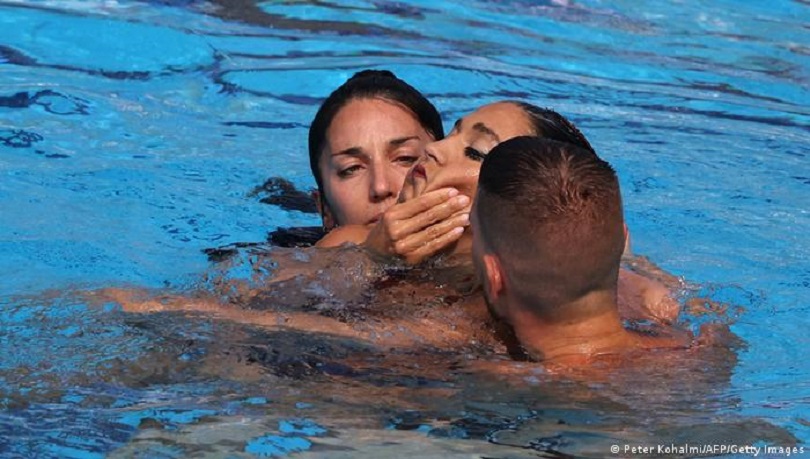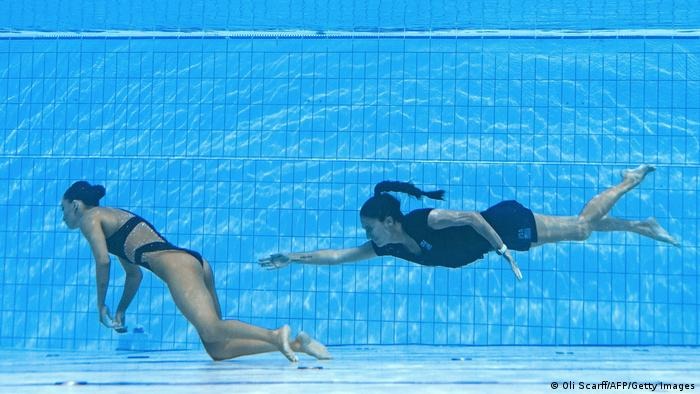How to prevent drowning and water injuries when you swim
Swimming accidents, injuries and drownings are common even among professionals at World Championships, like American artistic swimmer Anita Alvarez. But accidents can be prevented.
Just this week, there were reports of two fatal swimming accidents in Spain — the first of a 29-year-old man at a wedding and the second of a 7-year-old girl on holiday.
But swimming accidents are that common, even among professional swimmers. Anita Alvarez, an artistic swimmer from the US, had to be saved from drowning after losing consciousness in a pool at the FINA World Championships in Budapest on Wednesday.
Fortunately, there are ways to minimize or prevent the risk of fatal swimming accidents and injuries.
How common are drowning deaths in swimming?
The World Health Organization says drowning is the third most common cause of "unintentional injury death" worldwide. Drowning accounts for 7% of all injury-related deaths.
Every year, an estimated 236,000 people worldwide die in drowning accidents, with children, males and "individuals with increased access to water" facing the highest risk of drowning, says the WHO.
American swimmer Anita Alvarez (left) was rescued and revived after fainting in the pool
According to the Centers for Disease Control and Prevention, nearly 80% of all people who die from downing in the US are male, and that that may be linked to "risk-taking behaviors, and alcohol use."
Not all drownings are fatal. While there is an average of 11 drowning deaths per day in the US, the CDC says that an average of 22 additional cases aren't fatal.
What are the most common swimming injuries?
Swimming injuries, such as "swimmer's shoulder," are also common. They are often caused by fatigue and bad stroke techniques.
Swimmer's shoulder is an inflammation of the biceps known as bicep tendinitis and is associated with "shoulder instability." According to the University of Rochester Medical Center in the US, this injury can happen when "structures that surround the shoulder joint do not work to maintain the ball within its socket."
Think how every part of your mind and body works together to move and support you through the water when you swim. When one part of your body gets tired, that will have a knock-on effect.
Swimmers can also suffer lower body injuries, such pain in the hips or back, especially if they swim breaststroke. They might experience inner knee and hip problems from breaststroke kicking and back injuries from dolphin kicks — a technique that swimmers use to create propulsion and speed.
So, it's really important to take precautions before you jump in the pool or paddle out into the ocean.
How can you prevent swimming injuries?
The first and most common advice is "Don't just jump in!"
Warm up with some light stretches and exercise before you start your swim. Make sure you cool down with stretches after your swim as well.
How to stretch your shoulders?
If swimming with children, especially very small kids, be there to help and supervise them.
And if you're lucky enough to be at a swimming pool with a fence, and you have to take your eye off the kids temporarily — even for just a short moment — make sure they are out of the pool and that the gate is locked to prevent them getting back in accidentally.
Beyond that, the advice is multifaceted and varied. It really depends on your personal fitness and health history. So, if you have any concerns, please ask your doctor and a certified swimming instructor.
To get you going, though, here are a few things to consider:
- Use good stroke technique — take lessons if you have to, and be honest about your ability!
- Reduce repetitive strokes that can cause pain or fatigue
- Exercise to strengthen your core muscles
- Take regular rest to recover
- If you're at the ocean, make sure there's a lifeguard on duty
- Don't swim right after you've had a meal
- Don't swim under the influence of alcohol or drugs
- Don't run and dive into the water
- If you get a cramp, stop swimming, move to a wall and gently stretch the affected area
- Be mindful of your breathing
- Stay hydrated — with drinking water, but not too much either!
And when in doubt, ask a professional.
Source: DW. Edited by: Martin Kuebler


















0 Comments